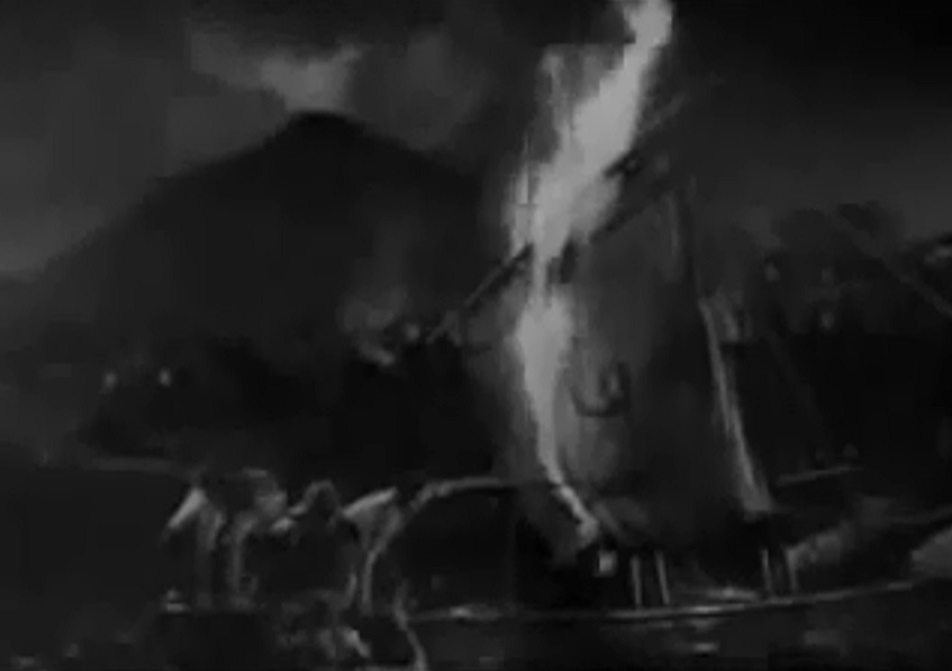King Kong

The wildest Irish
hypothesis sets this in the accidental poetry range in response to Howard
Hawks’ Scarface
like Arthur Penn’s Bonnie and Clyde,
the extraordinary patient craftsmanship not to the contrary, and one is not
referring to O’Brien’s art with its Laoco÷n touches and perfection of mimesis. The Oscar-nominated photography is only surpassed and set
off by the editing, which itself might give rise to Hitchcock’s
definition of cinema as “a succession of images”,
furthermore a process shot of a falling apartment-dweller lingered with him for
a quarter-century.
Everyone knows
what Whitmanesque means, but none or few notice the meticulous construction of
his poems. Poetically, Kong is allied to Emma
Lazarus’s “New Colossus” (in fact, they turn out to be
united), technically, the complete calm of the image stream identifies the
careful preparation of each scene in the script. One
might mention Schaffner’s The War
Lord as thematically related.
Odd to think so
rare a beauty sprang up a short walk from the present city, at RKO Studios, in
the very year of Hitler’s accession to power. Harry
R. Hopps’ World War I recruitment poster for
the U.S. Army (Destroy This Mad
Brute—Enlist) bears a likeness of Kaiser Wilhelm II, Edward the Seventh’s nephew Willy
(dir. John Gorrie), as the Ape of Militarism that
tells all the tale (Hopps is one of the artists responsible
for Raoul Walsh’s The Thief of
Baghdad).
Mordaunt Hall of the New
York Times, “a fantastic film”. Joe
Bigelow (Variety), “highly imaginative and
super-goofy yarn is mostly about a 50-foot ape who goes for a five-foot blonde.” Time
Out, “all the contradictory erotic, ecstatic, destructive, pathetic and cathartic
buried impulses of ‘civilised’ man.” Catholic News Service Media Review Office, “this classic adventure fantasy succeeds
largely because of the giant ape’s sympathetic treatment and Willis H.
O’Brien’s imaginative special effects in animating Kong and the
prehistoric world of Skull Island.” Halliwell’s Film Guide, “the greatest monster movie of
all,” citing more of Variety,
“should gather good grosses in a walk,” also James Agate (Sunday Times), “just amusing
nonsense”.
The Last Days of Pompeii

The village
smithy is obliged by the State to fight in the arena for gold, believing it to
be omnipotent.
His son espouses
the slave religion Christianity.
Charlton Heston
in Robson’s Earthquake but
echoes Preston Foster’s disconsolate walk among the fleeing crowds as
fire rains down upon the town and harbor.
Andre Sennwald of the New
York Times, “a shade too long for complete comfort.”
Variety, “what is
presented is a behind-the-scenes of Roman politics and commerce, both of which
are shown as smeared with corruption and intrigue.” Leonard
Maltin, “climactic spectacle scenes are
thrilling and expertly done.” Time Out, “Mt Vesuvius blows its
top in fine fashion somewhere near the end of this sword-and-sandal
spectacular, but all the molten lava the special effects team can cook up
isn’t enough to atone for a cool, dreary script.”
TV Guide, “does not
quite come off, but it remains entertaining.”